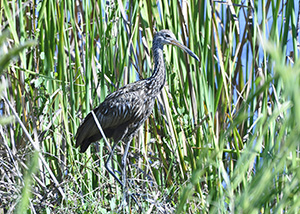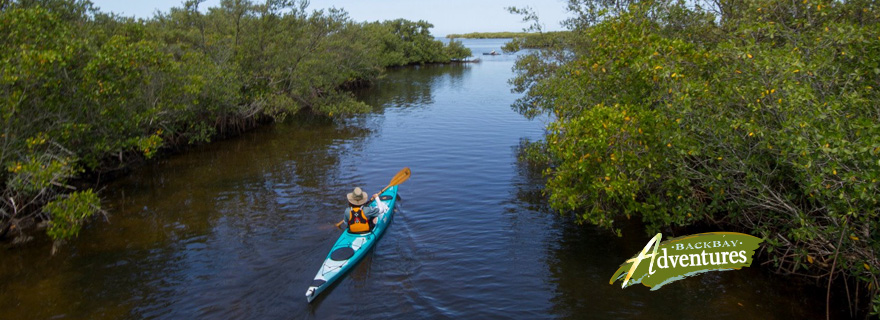Ask just about anyone in the Tampa Bay area to name their favorite park and inevitably the list will include Fort De Soto County Park, and Honeymoon Island and Hillsborough River State Parks.
By Nanette O’Hara with contributions from Marcia Biggs and Maya Burke; Published January 2015
These would be outstanding outdoor recreation sites anywhere in the world. But our region is also blessed with an abundance of “hidden gems,” from small “pocket parks” tucked within neighborhoods to sprawling wilderness areas so secluded you can hike for hours and only encounter a handful of people – or even no one at all. More than 61,000 acres of natural habitat has been preserved in Hillsborough County alone, through the voter-approved Jan. K. Platt Environmental Lands Acquisition and Protection Program (ELAPP).
More than 60 properties purchased by the Southwest Florida Water Management District are available for recreation that varies from hiking and paddling to bicycling and horseback riding. Camping is allowed on many sites. Some of these lands are as wild and remote as can be found in a region where cell service is ubiquitous and bumper-to-bumper traffic jams are the daily norm. Visit http://www.swfwmd.state.fl.us/recreation/ for comprehensive information about SWFWMD lands and a downloadable recreation guide.
Here is a very short list of diverse “hidden gems” to get you started:
Eureka Springs Regional Park
6400 Eureka Springs Rd.
Tampa, FL 33610
(813) 744-5536
hillsboroughcounty.org/Facilities/Facility/Details/7934
Fee: $2 per vehicle (for up to 8 people in a vehicle)
Delightfully quirky, Eureka Springs is Hillsborough County’s only botanical park, a gift to the county from Albert Greenberg, who created the state’s first tropical fish farm there in the late 1930s. Mr. Greenberg also brought tropical plants back from his fish-finding expeditions, and his lush gardens soon became a popular local picnic spot, while the springs hosted many baptisms.
The park is now an unusual combination of manicured gardens and natural areas. At just 31 acres, it is the county’s smallest park and also among the least visited. That is a shame, because Eureka Springs is a delightful place for a Sunday stroll. Gardeners will especially appreciate the lovingly tended landscape beds of camellias, gingers, begonias and bromeliads, as well as a stunning greenhouse of orchids and rare tropicals. An outdoor pavilion is a picture-perfect setting for weddings and a covered pavilion is ideal for group meetings and reunions.
The gardens give way to an impressive boardwalk that winds through a forested wetland. Close to the gardens, this area is a smorgasbord of invasive plants that spread from the site of the fish farm. As you walk further more natural areas prevail. Eureka Springs itself no longer flows – construction of the nearby Tampa Bypass Canal breached the aquifer and eliminated the spring flow. But the low-lying lands along the boardwalk hold water, and native wetland trees such as red maple and cypress.
Purity Springs Park
8126 N. River Shore Drive
Tampa, FL 33604
apps.tampagov.net/parks_search_webapp/ParkDetail.aspx?nbr=112
Fee: None
Purity Springs Park is one of a series of pocket parks located along the Hillsborough River in the neighborhoods of Seminole Heights, Lowry Park and Sulfur Springs, just north of downtown Tampa. These postage-stamp parks are an urban oasis from the hectic hustle of the daily grind — a perfect place to spread a blanket for a picnic lunch under the oaks, or sit on a bench with a book.
Purity Springs stands out because it is an actual bubbling spring that is completely accessible – no fence or wall surrounds it. Kudos to the city of Tampa for making this beautiful little jewel available to all.
The spring flow was bottled for drinking water by the Purity Springs Company in the 1930s. Its circular spring pool, lined with limestone rock, flows down a small creek and under the road to the Hillsborough River. The city is restoring the 1-acre park by removing invasives (which are plentiful all along the river shoreline in this part of Tampa) and replanting with native trees and shrubs.
Nearby is the larger River Tower Park (401 E. Bird Street), with its historic Sulphur Springs water tower. This is also a great place to picnic, and occasionally open-air movies and concerts are offered here.

Blackwater Creek in Hillsborough County is a well-kept secret — even though it’s also one of the region’s best hikes.
Blackwater Creek Preserve
2469 Patrinostro Road
Plant City, FL 33565
(813) 672-7876
Fee: None
We knew this had to be good when the last visitor to check in at the trailhead before us was 17 days earlier. During the whole time we were there, hiking all six miles of trails, we did not encounter another person. What we did see were sandhill cranes, wild turkeys, numerous hawks, woodpeckers and lots and lots of warblers. Deer, gopher tortoise and Sherman’s fox squirrels also live there. Had we arrived a few weeks earlier, we would have seen an explosion of fall wildflowers, including purple blazing star and bright yellow goldenrod and swamp sunflower. Note to self to return in October!
Blackwater Creek truly is one of Hillsborough County’s best-kept secrets, but one that deserves more attention from hikers, birdwatchers and other outdoor enthusiasts. Purchased through the county’s ELAPP, this nearly 2,000-acre preserve boasts some of the most pristine natural habitats remaining in Hillsborough, including pine flatwoods, palmetto prairie and riverine swamp. Guided group tours are available for a nominal fee through the county’s conservation services office at (813) 672-7876.
There are two trails, totaling about 6 miles in length and they are wide, grassy pathways that make for easy hiking — though you may encounter spots that are under water after heavy rains, as we did.
This is one place we plan to explore again (and again), along with a much larger but equally secluded conservation area, the Lower Green Swamp Nature Preserve, that is just 8 miles away and offers 11.6 miles of hiking trails.
Moccasin Lake Nature Park
2750 Park Trail Lane
Clearwater, FL 33759
(727) 793-2976
myclearwater.com/gov/depts/parksrec/facilities/mlnp.asp
Fee: None
Tucked away in a residential neighborhood in Clearwater is Moccasin Lake Park, 51 acres of quiet wilderness off bustling US Highway 19. Bordering Cliff Stephens Park (also worth a visit), this urban nature preserve has 1-1/4 miles of wooded trails and boardwalks, a butterfly garden, a turtle pond, and an interpretive center with live critters and educational displays.
Moccasin Lake is the perfect place to bring the family for a few hours of outdoor recreation. The interpretive center’s neatly maintained aquariums tout a colorful variety of snakes, lizards, frogs and toads, and turtles. Wish and Penelope, two injured bald eagles, are permanent residents. Crushed shell trails are wide and maintained, looping through the woods along a creek to the lake. It’s too bad that US 19 with its roaring traffic borders one side of the lake, but this is Pinellas County.
The park is owned by the city of Clearwater. The city is working to increase the number and variety of programs offered at Moccasin Lake, so check the website regularly for events. Finding the park can be a challenge; be sure to map it before you leave home. It’s open to the public Thursdays through Saturdays from 10 a.m. to 5 p.m. and on Sundays from noon to 4 p.m.
Werner-Boyce Salt Springs Park
8737 US Highway 19 North
Port Richey, Florida 34668
(727) 816-1890
floridastateparks.org/wernerboyce/
Fee: $3 per vehicle
Werner-Boyce is the only state park in Pasco County. For the shorebound, it may have limited appeal as there are few facilities and 80% of the park is marsh or submerged land, including the 320-foot-deep Salt Spring itself.
More hiking trails are coming, but for now this is a park best explored by water rather than land. The Salt Springs Run is the most accessible paddle, a 3-mile round-trip scenic passage through gorgeous marshes and mangroves that attract many beautiful wading birds. Kayaks can now be launched from Werner-Boyce, but also just as conveniently from nearby Brasher Park, located at the west end of Koons Drive in Port Richey. Brasher Park itself has restrooms, paved parking, and a small boat launch offering easy access to Salt Springs Run and Double Hammock Creek.
The Salt Springs (and Double Hammock) paddles can be a bit tricky. Limerock outcroppings, a kicking current and hidden turns in the mangroves and marshes all up the difficulty (and fun factor!). For those who aren’t comfortable with unmarked paddling trails, it helps to know the GPS coordinates. Tide timing is also important. It can be hard to navigate on a low tide, but the visibility is better with more freshwater flow, so outgoing high tide is ideal for trips starting from Brasher Park. Native American history as well as information about the Confederate salt-making operation can be found at these links: saltspringsalliance.com/page-1818165
fivay.org/salt_springs.html

A limpkin stalks prey at Colt Creek State Park.
Colt Creek State Park
16000 State Rd 471
Lakeland, Florida 33809
(863) 815-6761
floridastateparks.org/coltcreek/default.cfm
Fee: $4 per vehicle
Colt Creek State Park is part of the Green Swamp Wilderness Preserve of five properties purchased by the Southwest Florida Water Management District to protect the Green Swamp, which forms the headwaters of the Hillsborough, Withlacoochee, Ocklawaha and Peace rivers. This 5,067-acre park is named after one of the tributaries that flows through the property. It’s one of our newest state parks, opening to the public in 2007.
A former cattle ranch, Colt Creek features pine flatwoods, cypress swamps, freshwater ponds and open pastureland with terrific birding and butterfly watching opportunities. Restoration of native habitats is underway, with plenty to keep managers and volunteers busy. On our early Fall visit, we saw native liatris, goldenrod and rosinweed wildflowers, but the most common blooming plant in the open areas was caesarweed, a highly invasive plant that thrives in disturbed soil.
Colt Creek offers something for everyone: hiking and horseback riding on more than 12 miles of marked trails, off-road bicycling, picnicking, primitive camping, and even bank fishing on three different lakes, one with a nice fishing pier. Wildlife watchers should arrive early for the best chance to see deer, wild turkey, Sherman’s fox squirrel and even a bobcat.
